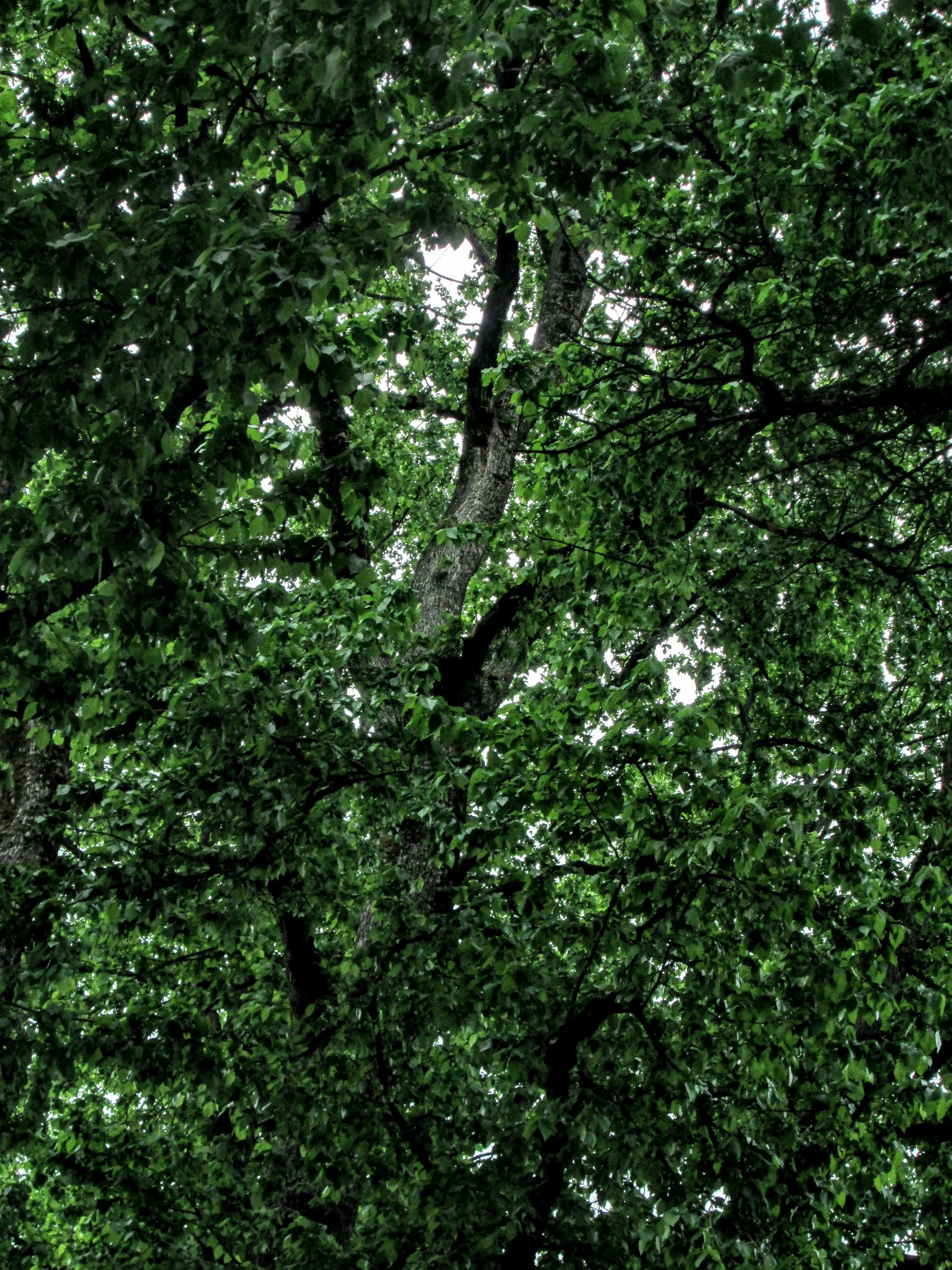Trees Impacted by Pavement and Infrastructure Need More Water
A street tree in a planting strip less than 4 feet deep between sidewalk and curb, a tree surrounded by sizeable expanses of pavement, or a tree on a sunny, unshaded site is likely to need more water than suggested by the general guidelines below.
Easiest Watering Method
Many people find drilling three 3/16-inch holes in a 5-gallon bucket, filling the bucket with water, and placing it near but not right up against the trunk works well. The bucket provides a slow, deep soaking in the root zone, which is best for the tree. Buckets need to be refilled four to ten times to fully water a tree. Repeat at least monthly. See photos.
Young Trees Up to Three Years Old
Starting after deciduous trees fully leaf out and spring rains have ceased, water 15 gallons once a week and through the the summer. The goal is to have those 15 gallons slowly soak below the surface, allowing the roots to grow deep to reach that water. If you water more often but shallowly, the roots will only grow near the surface and will be more prone to dry out quickly when you stop watering. Note that to get young trees through very hot spells, a slow 15-gallon watering twice a week ahead of the searing weather might be necessary.
Evergreens also need to be watered during long dry periods in the fall or winter.
Trees Older Than Three Years
For trees not native to dry-summer climates, which include most of Portland’s trees, water monthly in summer—20 to 50 gallons or more—especially in late July and August. The exact amount depends on tree size and species. Trees lose moisture through their leaves, especially during heat waves. You may need to provide even more water during those periods. Some species, like katsuras (see photo below) and tulip trees, must be watered to avoid going into early drought stress in Portland. Yet many oaks are naturally more drought tolerant and may be able to get by with less watering, as is also true of smoketrees and most pines. Trees with thin leaves, such as stewartias, definitely need the boost summer irrigation gives them.
Katsura trees (Cercidiphyllum japonicum) under drought stress in Oregon. They will often lose their leaves a month or more earlier than they should, weakening the tree and depriving you of shade.
In Either Case, Where Should I Place the Watering Bucket?
For trees under three years old, place the bucket close to but not up against the trunk. For trees more than three years old, place the bucket within the tree’s drip line (the canopy’s farthest reach), within a few feet of the trunk but not up against the trunk. A five-gallon bucket with three 3/16-inch holes drilled close to the bottom of the sides will take about 10 minutes to drain. Each time you refill the bucket, move it to a different spot within the drip line.
What About Native Oregon Trees?
If you have drought-tolerant West Coast natives such as Oregon white oak, California coastal live oak, or madrone, you're in luck—they adapt to dry summers and manage without summer watering after their first couple of years. In fact, such trees shouldn’t be watered during the warmer months. Read up about your particular tree species, as requirements vary.
For further information about watering trees, see:
https://friendsoftrees.org/news-resources/tree-care-guide/
https://www.portlandoregon.gov/trees/article/420885#watering
https://chopdoc.com/creating-your-own-tree-watering-system/
And for information about proper tree pruning—especially important to help young trees live up to their full potential—see:
https://friendsoftrees.org/blog/leaflet-winter-pruning/
https://www.portland.gov/trees/tree-care-and-resources/how-prune-properly


